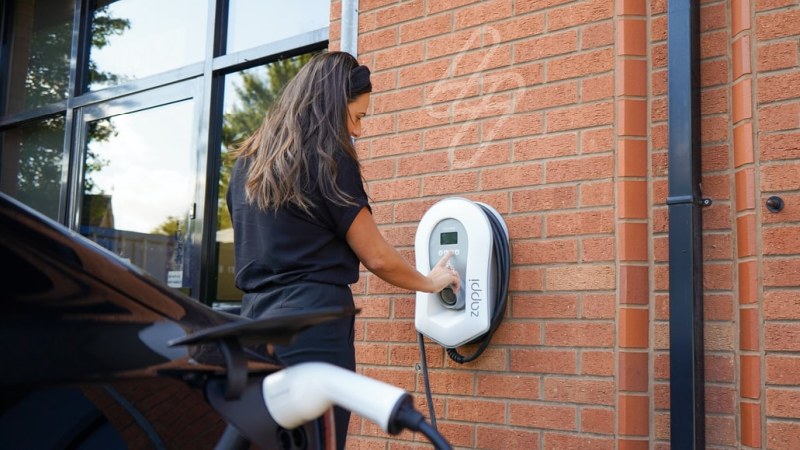Say Goodbye to Gas: Overview of Electric Vehicles Trends
Electric machines are crucial components of electric vehicle drive systems. The bulk of traction drive systems have evolved in recent years toward having some sort of permanent magnet system. There is a growing trend toward improving the energy capacity and efficiency of traction machines, resulting in seeking new enhancements to core machine topologies, as well as the introduction of new machine categories. The worldwide electric car market has grown dramatically over the last decade, and experts expect this trend to continue. Despite the fact that the number of electric vehicles on the road has increased dramatically in recent years, estimates from the electric vehicle sector imply that we've barely scratched the surface.
Let us just take a glance at what has transpired in the EV sector over the last several years to have a better understanding of where it is now. The number of electric cars on the road in 2019 was just 9% higher than that in 2018. This was a significant departure from the preceding six years' rates of growth, which ranged from 46 to 69 percent. The reasons for this transition were sale declines in the two major markets, the United States and China, in the closing stages of 2019. Despite static growth in the two largest countries, worldwide EV sales have increased, thanks mainly to Europe, which witnessed a 44 percent increase. Generally, new automobile registrations did not increase significantly in 2020. The COVID-19 epidemic, as well as the economic downturn that followed, had a significant impact on the worldwide automobile industry. During COVID-19 at the start of the year, the prognosis for worldwide electric vehicle sales in 2020 was fairly unclear. Nonetheless, despite the epidemic and its consequences, the year 2020 turned out to be remarkably favorable. From 2019 to 2020, worldwide EV sales increased by 43%, with the global autonomous car industry's share of the market reaching a new high of 4,6%.

Whilst passenger vehicles are often given credit for the electric breakthrough, it's important to remember that other methods of travel are also becoming more environmentally friendly. The public transport system and the collaborative economy are two noteworthy EV trends for 2020 and beyond. Since their introduction in 2017, battery-powered micro-mobility choices have grown significantly. Electric micro-mobility surged in 2020, especially during the second part of the year, as a result of different initiatives implemented to encourage mobility. Electric-assisted bicycle (e-bike) sales in the United States alone more than quadrupled in 2020. At the same time, electric scooters are becoming more popular in Europe (e-scooters). More than 100 European towns have begun to operate e-scooters, as per the Global EV Outlook 2021.
Since 2020, electric buses have also increased in popularity. In 2020, there will be 600,000 electric buses in the world. In the last year, China has registered 78 000 brand new electric buses, maintaining their market dominance. Chile, along with China, is a global pioneer in electric bus systems, with a goal of electrifying all of its public transportation by 2040. The Clean Vehicles Directive also allows for public purchase of electric buses in countries of the European Union.
Another fascinating point of view is the introduction of different electric vehicle components and recharging methods. The rise in electric car registrations led to a 33 percent increase in automotive lithium-ion battery output in 2019 compared to the previous year. China continues to be the world's largest producer of batteries, producing and contributing more than 70% of worldwide capacity. Europe, on the other hand, is not lagging behind. In 2020, many new battery plant projects have been announced, since battery demand has outpaced Europe's manufacturing capacity in the previous year. Europe's share of the global battery output might climb to 31% by 2030, as per BloombergNEF. In contrast, in 2020, the continent's worldwide battery output was just 7%. The EV industry will profit from a range of advancements in battery properties, fueled by a growing demand for batteries in household gadgets. Changes in battery chemistry, energy density, and battery pack size are all factors to consider in the future. Eventually, these modifications will result in significant financial savings and better productivity improvement.

Speaking of Europe, the next several years will be critical for it to maintain its leadership position. By 2025, there is a plan to attain the first milestone of 14 million electric vehicles. Afterward, moderate estimates suggest 33 million electric vehicles by 2030, while high projections suggest 40 million electric vehicles traveling Europe at the same time.
Experts anticipate that all new automobiles sold in Europe will be electric starting in 2035. Needless to say, only time (and fresh data) will tell whether or not such forecasts are to come true. The newest developments, on the other hand, appear to be in the right direction. In conclusion, now would be the moment for corporations to join the electric vehicle train.
